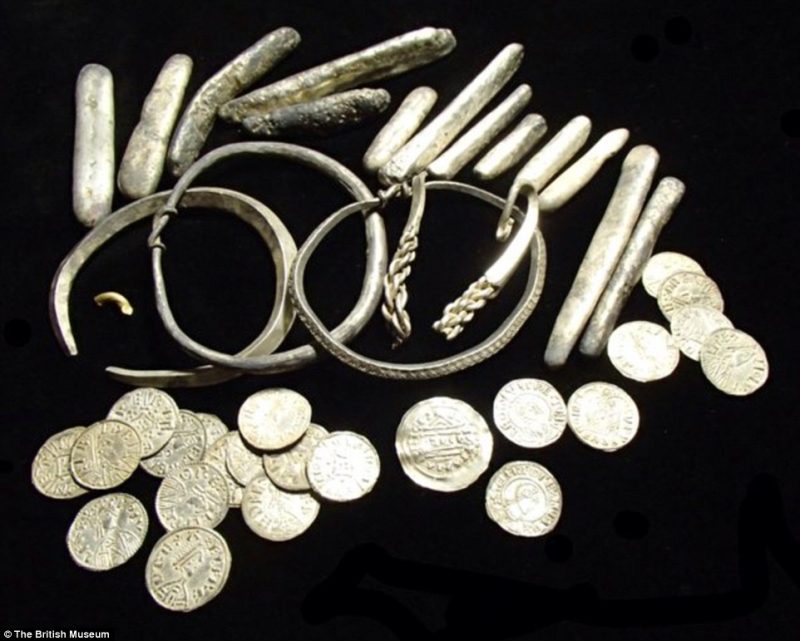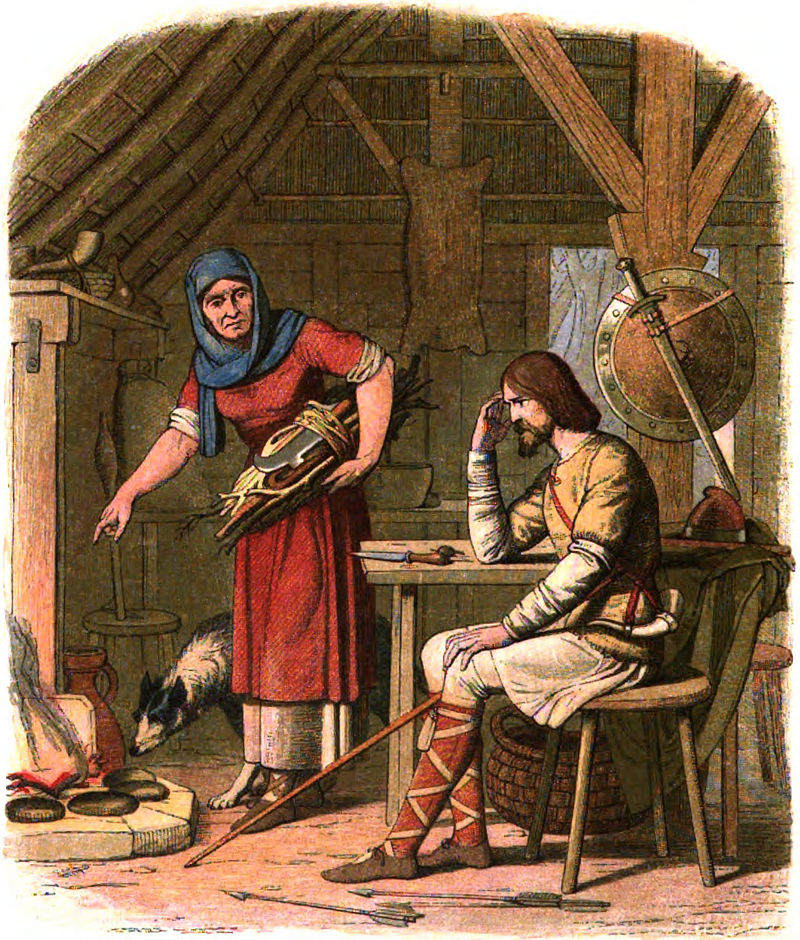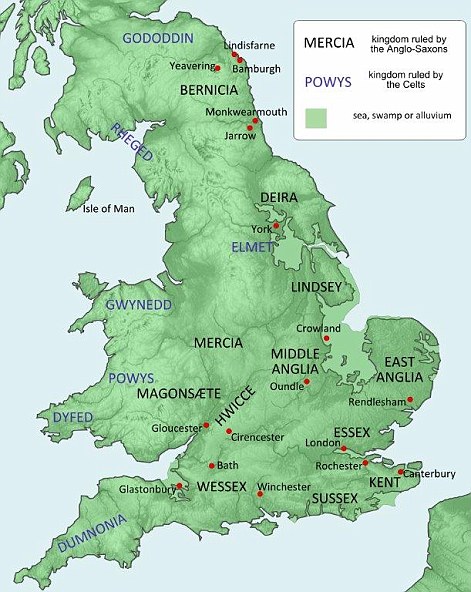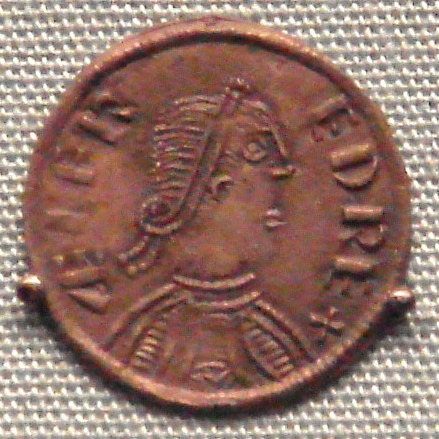For those who do not know the two of the greatest Kings of all time, they are Alfred the Great who was the King of Wessex, and Ceolwulf II of Mercia.
Just recently there were more than 200 pieces of Viking silver, including coins, ingots, and jewelry, found buried in a field in Oxfordshire. The treasure is giving archaeologists new information on not only King Alfred, but also Ceolwulf II. That is extraordinary, because King Alfred had worked hard to erase Ceolwulf II from history.
The treasure dates back to around 870 AD and will be on display at the British Museum in London. By displaying the treasure, it will give Alfred a little infamy, unlike previous history has done. Alfred was considered a good king to many people, but this new find reveals something entirely different.

Archaeologists believe that the treasure was buried quickly after Alfred’s defeat of the Vikings of Edington in Wiltshire. It was unearthed by a metal detector, James Mather, in Watlington, Oxfordshire in October. He had been searching for five hours and he was about to give up when his detector found something. It revealed 186 coins, seven pieces of jewelry, and 56 ingots. The find will hopefully help archaeologists reveal clues as to how Alfred and Ceolwulf II had co-operated to battle their invaders.
During the time, England was divided into several separate kingdoms. Wessex and Mercia were two of the most powerful kings against the Viking forces.
On the silver coins, one side has an image of two Roman emperors sitting side by side which are thought to have represented the allies. Many of the coins showed several different years and origins in different mints, which reveals that the allies were there for years.

Even though they had the alliance, Ceolwulf is not as well remembered Alfred. Ceolwulf is only remembered for ruling Mercia, which covered a majority of the Midlands. He ruled for five years and no one knows what his eventual fate was.
However, many people know Alfred’s complete history. He had a story commissioned of the period and had established himself the sole savior of the Saxons, while Ceolwulf was considered the “puppet king” of the Vikings. Alfred made sure not to involve Ceolwulf in his written history; he was completely erased from it.
While not all accounts of history are truthful, the coins do not lie. Gareth Williams, Curator of Early Medieval Coinage at the British Museum, stated that the coins show a completely different picture of history. Both Alfred and Ceolwulf are on those coins, which means they worked together to defeat the Vikings. They formed an alliance with each other and it must have ended a few years later.

Ceolwulf had controlled Mercia from 874 to 879 AD and Alfred had ruled the rival kingdom Wessex from 871 to 899 AD. Wessex covered the west and the majority of the south of England. Alfred was referred to as the “king of the English” on the coins.
Williams said that Ceolwulf gets a bad rap in Anglo Saxon history because Alfred made him look like a fool. Who wouldn’t believe the most powerful king, right? Almost 15 years after Ceolwulf disappeared, Alfred wrote him off as “nobody of consequence”. He was viewed as no longer convenient.
These new pieces of information are quite the opposite of what everyone thought of Alfred. In his history accounts, everyone thought he was a fair and just king who had loved everyone. He was considered to have looked after all of his people.
Many academics from the British Museum and the Ashmolean in Oxford believe the hoard of treasure was buried at the end of the 870s after Alfred’s defeat of the Vikings at Edington in 878. At the Battle of Edington, Alfred’s army was reported as having defeated the “Great Heathen Army”, which was led by Guthrum, in May 878 AD.
Four years before that, historical documents suggest that Mercia and its army had collapsed. Guthrum had made several attacks on Wessex in 875 and by 878 his army had occupied several parts of the east and northeast England.
In spring 878 AD Alfred had marched to Edington to take on the soldiers and Guthrum. The West Saxon troops ended up winning the battle, resulting in Alfred cutting off the supplies to Guthrum’s army, which was staying in Chippenham. Guthrum had asked Alfred for a truce, which Alfred granted as long as they left his kingdom. This immediately became known as the Peace of Wedmore.

Guthrum returned to East Anglia where he was converted to Christianity, with Alfred as his sponsor. Archaeologists believe that the Viking treasure had been buried when they were moving north of the Thames. A majority of the treasure comes from the time of the “Last Kingdom”, which was when the Anglo-Saxon kingdoms Mercia and Wessex were fighting for survival from the threat of the Great Heathen Army. The fight had led to the unification of England and its kingdoms.
Williams added that finding the treasure wasn’t necessarily the highlight, it was more about filling in a gap in history that was caused by Alfred’s vanity. Archaeologists and historians can now put the pieces of the puzzle together. By looking at the coins’ dates, they can piece together the chunk of history that was missing. Before that, historians were unsure of what really happened in that time period; they only had Alfred’s documents as evidence.